Choosing the right baseball bat for the upcoming season is a common dilemma among ball players. While professional MLB players stick to the traditional wooden bats, those playing in the youth and amateur leagues don’t really consider wooden bats as an option.
And the main reason behind it is that replacing a wooden baseball bat every few games can be too expensive for most amateur players. So they often turn to alloy or composite bats as an alternative. But the question remains, Alloy vs. Composite Baseball Bats: which one is the better choice?
Well, the common consensus is that composite bats often offer better performance. But alloy bats, on the other hand, last longer and offers better value. And that brings you back to square one – which one do you go for here?
Truth be told, both bats can make a great addition to your arsenal, but there are certainly some huge differences between them. And if you have the budget to pick up only one bat, then you need to weigh the differences between them before you can settle on the right one.
I will help you understand the key differences between an alloy and a composite baseball bat so that you can decide which bat is the better investment on your end. So, let’s get started.
Table of Contents
What is an Alloy Baseball Bat?
These days alloy baseball bats, otherwise known as aluminum bats, are the most popular choice in youth and high-school baseball leagues. First created in 1974, these bats came to the scene as a more efficient option over wooden bats.
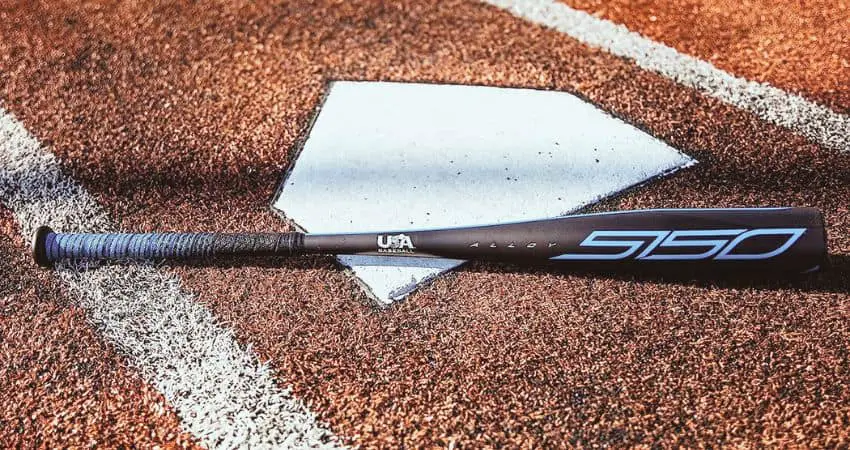
And aluminum bats really did outperform wooden bats in different ways. It had more pop, the bat was lighter, and it also didn’t break as easily as a wood bat. That’s why many youth players switched over to alloy bats when they first came out.
These days alloy bats are made by several companies. There are several advantages that you get out of using an alloy bat over a wooden bat.
Let me highlight a few notable ones:
- Alloy bats are lighter, allowing you to swing them faster.
- The bigger sweet spot lets you make a perfect barrel-to-ball connection easier.
- Alloy bats don’t break or shatter like wooden bats
But there are also a couple of issues that you need to be wary of when you are using an aluminum alloy baseball bat.
- The vibration of the bat on a hit might feel uncomfortable
- Not suitable for use in cold weather
- Affordable aluminum bats might not last very long
What Is Composite Baseball Bat?
Where alloy bats use aluminum as their primary construction material, composite baseball bats use carbon composites such as Kevlar for their construction. Because of this material choice, the manufacturers can fine-tune where the weight of the bat sits when you hold it.
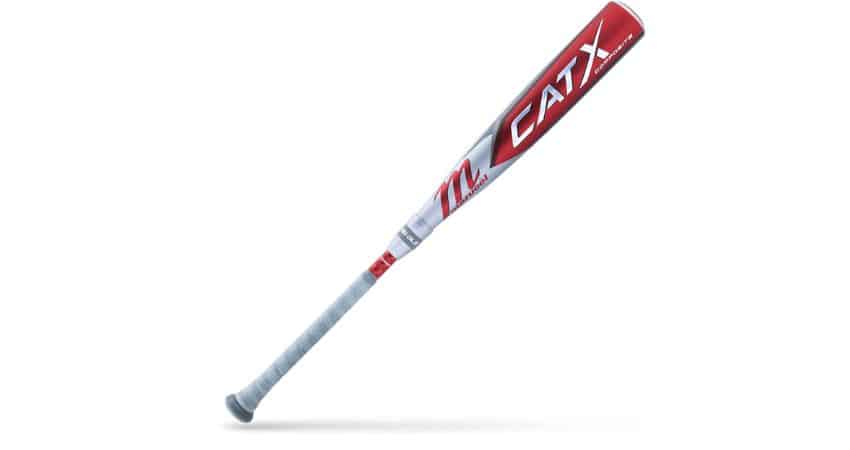
As a result, composite bats often come with larger sweet spots and reduced vibration. Composite baseball bats are a relatively recent invention. And similar to alloy bats, it’s most prevalent in youth and amateur baseball leagues. There are also hybrid baseball bats that use both alloy and composite materials in their construction.
The main strengths of a composite baseball bat are:
- It allows for a longer barrel length with a bigger sweet spot.
- Reduced vibration for minimized sting
- The lightweight and flexible barrel lets you drive the ball further
But then again, there are also some drawbacks to this material:
- Composite bats are prone to cracking
- These bats are more expensive than alloy bats
- Has a small break-in period.
Alloy Vs. Composite Baseball Bats: Key Differences
As you can see, there are plenty of strengths and weaknesses to both types of baseball bats. And regardless of whether you go with an alloy baseball bat or a composite one, there will be some sort of tradeoff.
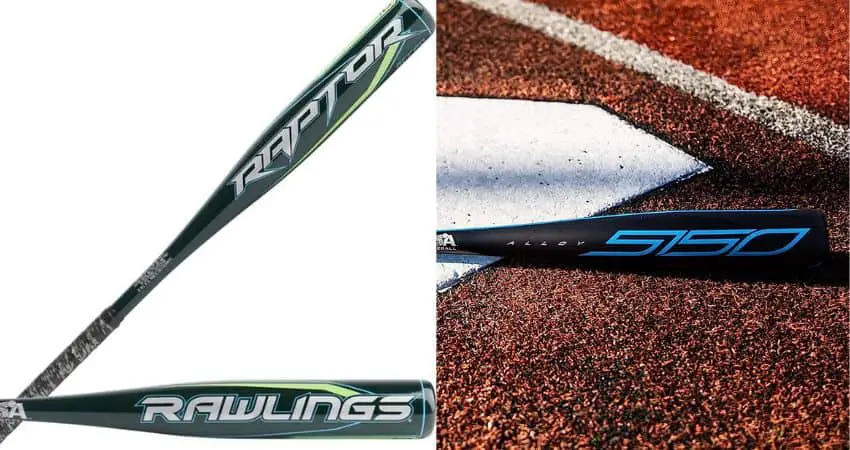
In this section, I will highlight the key differences between the two baseball bats to give you a clearer idea of exactly what you will be giving up going with one bat over the other. Here’s a quick chart to start things off.
| Key Factors | Alloy Baseball Bats | Composite Baseball Bats |
| Durability | Lasts the longest | Better than wood bat but less durable than alloy. |
| Performance in Cold Weather | Can break and feels uncomfortable | Slightly better performance compared to alloy bats |
| Vibration Intensity | Feels a bit extreme sometimes | Practically non-existent |
| Sweet Spot Size | Bigger than wood bats | Bigger than alloy bats |
| Break-in Period | None | 250 to 300 swings |
| Price | Pricier than wood bats | Pricier than alloy bats |
· Durability
One of the first things that a player looks for when buying their first baseball bat is its durability unless they are playing in the MLB. As an amateur baseball player, the last thing you want is to get a baseball bat that doesn’t even last you an entire season. In fact, that’s the main reason why amateur players don’t go for wooden bats.
Between alloy and composite bats, alloy bats last longer. Its metal construction ensures the bat survives the test of time and doesn’t shatter any time soon. Composite bats are also pretty durable, at least compared to wooden baseball bats, but when you put it up against an alloy bat, it doesn’t last as long.
· Performance in Cold Weather
Baseball is not really a winter sport, and using your expensive baseball bat, regardless of whether it’s made of aluminum alloy or composite materials, will cut down its lifespan significantly. Research shows that using a baseball bat when the temperature is under 60 degrees can cause it to underperform or even crack.
With alloy bats, the problem doesn’t end there. Because of the metal construction, holding an alloy bat in cold weather can feel extremely uncomfortable. Ideally, I would recommend not playing baseball in this type of weather, but if you absolutely have to – a composite bat will give you a better experience overall.
· Vibration Intensity
Alloy bats get a bad rep sometimes because of the sting (excessive vibration) they produce when you make a mishit. That’s why most players who use an alloy bat make sure that they are wearing a high-end batting glove when they are standing up on the plate.
With composite bats, however, that is not a problem. Since these bats are made of composite materials such as carbon fiber and Kevlar, it absorbs the shock from impact with the ball and practically eliminate any vibration that you might feel if you were using an alloy bat.
· Sweet Spot
One of the biggest advantages of an alloy bat over a wooden baseball bat is that it offers a larger sweet spot. Now, the sweet spot, for those that don’t know, refers to the part of the bat that you want to connect to the ball to get the most power from your swing. And the sweet spot of an alloy bat is pretty decent.

However, composite bats offer an even larger sweet spot allowing you to get the most out of your swing even when you are a relative newcomer to the scene. Some might say this makes composite bats the easier option for a player. But the truth is, properly training with a composite bat will let you reach your peak potential much sooner.
· Swing Speed
The swing speed of a baseball bat depends on how light it is. Think about it – if the baseball bat weighs less, you will be able to swing it faster. Inversely a heavy bat will require more strength and effort on your end to swing comfortably.
Now when it comes to the difference in swing speed between alloy and composite bats, composite baseball bats have a slight edge. Don’t get me wrong – alloy baseball bats are extremely light and help you get a decent speed behind your swing.
But composite bats are lighter because of how they use carbon composite materials for their constructions. So, you would be able to swing a composite bat slightly faster than an alloy bat.
· Sound Type
I know – it’s a weird difference to talk about when you are looking at baseball bats. Nonetheless, the sound that a composite bat makes when you make a perfect connection to the baseball is noticeably different than what you would hear if you were using an alloy baseball bat.
With an alloy baseball bat, when you make a perfect hit, you will hear a loud ping that echoes across the stands. However, with a composite bat, it sounds more like a crack, sort of what you hear when a wooden baseball bat breaks. It’s a small difference, but it’s still a difference worth mentioning.
· Break-in Period
The break-in period is usually something that you have to think about when you are buying a high-quality baseball glove. But when it comes to baseball bats, you really don’t think about it that often. That’s because alloy and wooden baseball bats are game-ready the moment you get your hands on them.
With composite bats, however, the story is different. You need to wait a while before you can really notice your composite bat performing to its fullest potential. The break-in period is relatively short, though, requiring you to swing the bat around 250 – 300 times, so it’s not a complete dealbreaker.
· Price
As much as we hate to admit it, sometimes your choice between an alloy or a composite baseball bat boils down to its price. I mean – it’s understandable. Baseball gear can be obscenely pricy sometimes, and if you are an amateur player, you shouldn’t feel pressured to spend your savings on a super-expensive bat.
Well, both alloy and composite bats will cost you more than a typical wood bat – I’ll say that right away. But between the two of them, alloy bats are relatively more affordable. Composite bats require a lot of materials and also offer an overall better performance, sure, but that also means you need to pay a bit more to pick one up.
Do Composite Baseball Bats Hit Farther Than Aluminum
This is a tricky question to answer. You see, composite bats are lighter than aluminum bats, which means while it’s easier to swing, it shouldn’t be able to generate as much power as an alloy bat. But in practice, the story seems different.
You see, the reason that a composite bat can generate as much power as an alloy bat, despite being lighter, is that it has a bigger sweet spot. That’s why getting a perfect hit with a composite bat is much easier than with a wood or aluminum bat.
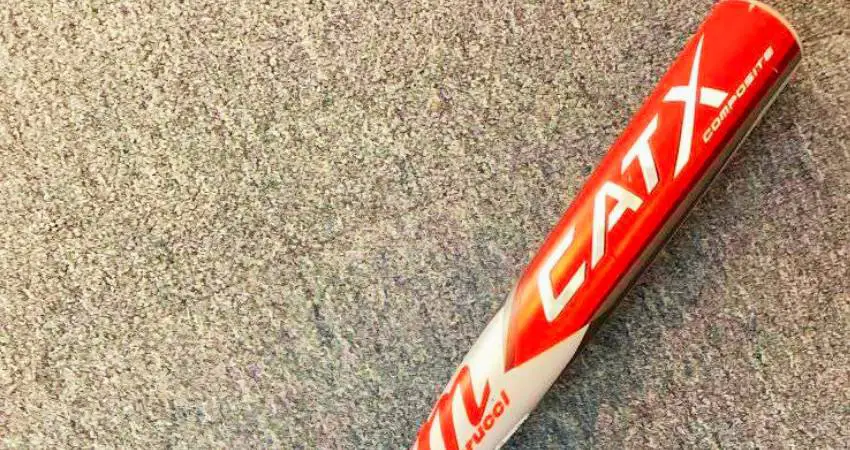
That being said, though, an alloy bat still has the ability to generate more power since it’s slightly heavier than composite bats. And when you compare how far the ball flies on a perfect hit from both bats, the alloy bat still takes the lead.
You can still hit home runs consistently with a composite baseball bat. But you need to swing the bat much harder than you would have to swing with an alloy bat to compensate for its lighter weight.
Are Composite Baseball Bats Better than Alloy
Composite bats are a somewhat recent invention in the scene, and they certainly offer some huge advantages over using an alloy bat. However, the question of whether they are outright better is somewhat complicated to answer. There are some strengths to composite bats, but there are also some huge weaknesses.
Let’s talk about the strengths first –
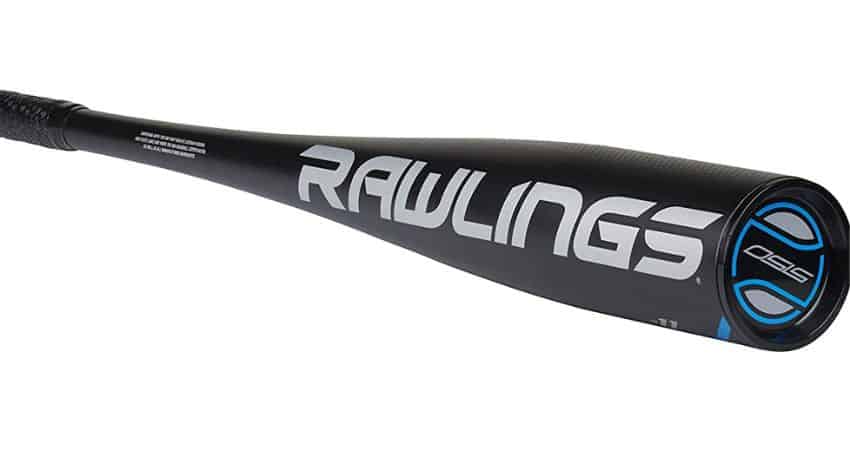
Strengths of Composite Bats
· Tuned Trampoline Effect
Since carbon bats are made from materials that let the manufacturer fine-tune the trampoline effect of the bat, it allows for more freedom. The manufacturer can decide whether the bat will be harder or softer in the handle or barrel to give you different types of experiences with the bat.
You won’t get the same treatment from an alloy bat. Alloy bats are pretty lightweight, that’s true, but typically, the top part of the barrel is heavier.
· Reduced Vibration
The main thing that a composite baseball bat does better than an alloy bat is minimizing vibration. If you use an alloy baseball or softball bat, I’m sure you are familiar with the sting that you feel in your hands when you make a mishit.
Well, with a carbon composite bat, since the materials are flexible, it can absorb the impact of the baseball and lowers the vibration that a player feels when they are holding the baseball bat.
· Lightweight and Balanced
Another huge win for composite bats is that they typically weigh less than a comparable alloy baseball bat. And in addition, the weight of the composite bat is a lot more balanced compared to wood or alloy bats. Now swing weight refers to the weight of the bat a hitter feels while swinging through the strike zone.
With a composite bat, the weight of the bat is split evenly through the barrel giving the players the perfect swing weight. As you can see, there are plenty of benefits that you’ll get by going with a composite bat over an alloy bat.
However, you also need to remember its weaknesses –
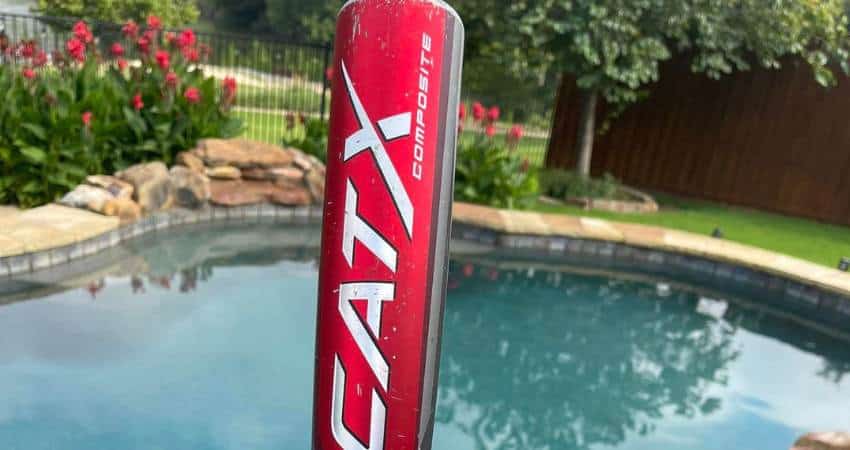
Weaknesses of Composite Bats
· Higher Cost
One of the biggest drawbacks of composite bats is their high price tag. Composite bats are usually more expensive than alloy bats because they require more advanced materials and manufacturing processes. A good quality composite bat can cost you hundreds of dollars, while an alloy bat can be much cheaper. If you are on a tight budget, or you don’t want to invest too much in a bat, then a composite bat may not be the best option for you.
· Break-in Period
Another downside of composite bats is that they need a break-in period before they can perform at their best. A break-in period is the time it takes for a bat to loosen up and reach its optimal performance level. During this period, you need to hit several hundred balls with your bat, preferably at different speeds and angles, to allow the fibers in the composite material to flex and adjust. This can take several hours or even days, depending on how often you use your bat. If you don’t break in your bat properly, you may not get the full benefits of the trampoline effect and the reduced vibration. You also risk damaging your bat if you use it in cold weather or hit too hard before it is fully broken in.
· Durability Issues
Another problem with composite bats is that they tend to crack or break more easily than alloy bats. Composite bats are more susceptible to damage from impact, especially if they are not broken in properly or used in inappropriate conditions. For example, if you use a composite bat in cold weather, the material may become brittle and crack under stress. If you hit a ball too hard or too close to the end cap, you may also cause your bat to crack or split. Once your bat cracks or breaks, it becomes unusable and unsafe. You may have to replace your bat more often if you use a composite bat, which can add to your expenses.
Composite bats cost a lot more than a typical alloy bat. So if you are on a tight budget, getting one might not be an option for you. Besides, composite bats tend to break or crack faster than alloy baseball bats. This does not bode well with players who want a baseball bat that will last them an entire season without any headache.
And in addition, most, if not all, composite bats come with a break-in period as part of the package. What that means is before you can start using the bat in your competitive games, you need to go to the training grounds and break it in by hitting baseballs off of a batting tee.
Now That We’re Here
The truth is both alloy and composite baseball bats have their places in the game, and the one you choose depends on your personal preference. Some people like going with alloy bats because of their durability and the ping sound that echoes through the stands when they hit the ball perfectly.
Composite bats are also amazing, giving you a good blend of swing weight, performance, and comfort. But then again, they can break pretty frequently, and having to buy a second composite bat in one season can weigh a bit heavy on your wallet.
The main thing is to weigh the pros and cons of each bat yourself. If you think the alloy bat gives you a better value, then by all means, go for it. Just make sure you also consider all the weaknesses that come with an alloy baseball bat.
I hope my in-depth comparison between alloy and composite baseball bats could help you figure out which bat is perfect for your needs. Good luck!
